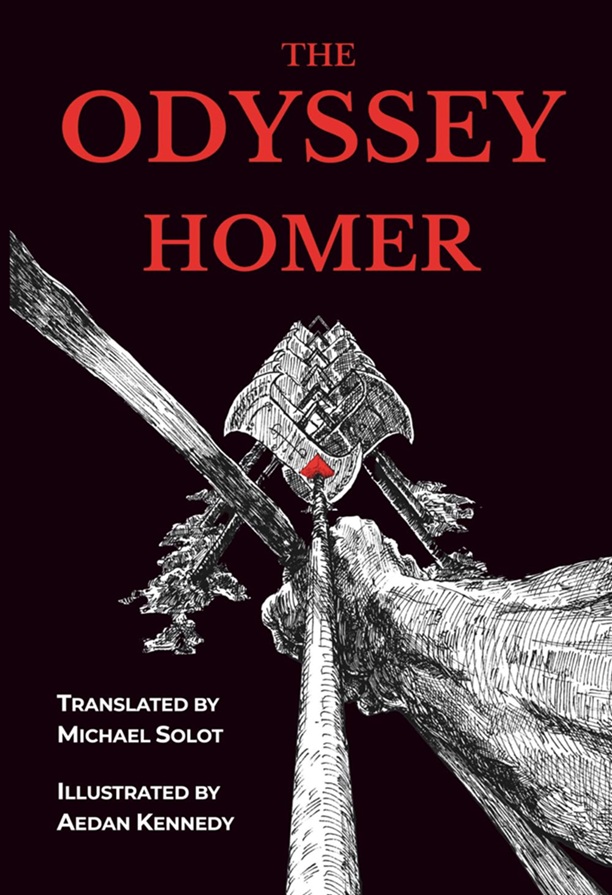.
A Translation of the German National Anthem and a Musical Setting for the Tune “Austria”
Some months ago, I jotted down a tune that carried a hint of familiarity. The notes bore a resemblance to the tune “Austria,” composed by Hayden in 1797 for the birthday of Francis II, Holy Roman Emperor. It now forms the tune for a well-known American hymn, “Glorious Things of Thee are Spoken,” along with several other less-known texts.
But “Austria” is most well-known for being the tune for the German national anthem, with a three-verse text, “Das Lied der Deutschen” originally written for the tune by a poet with a very long name, August Heinrich Hoffmann von Fallersleben in 1841. The music and text were declared the German National Anthem in 1933 during the Weimar Republic. It soon became associated with Hitler who used the opening verse, Deutchland, Deutchland, Uber Alles, as a proclamation of Aryan supremacy.
Following WWII Germany scrapped the anthem, but later re-adopted it with only the third verse being sung. Later, the first two verses were formally removed. The third verse I have translated into a singable text as follows. Note that the opening words, “Einigkeit und Recht und Freiheit”
have been adopted as the unofficial motto for Germany. The words appear on the belt buckles of German troops:
.
Unity and Justice, Freedom
For the German Fatherland!
For these let us strive together
Brother-love with heart and hand!
Unity and Justice, Freedom
Pledge that happiness will stand—
Bloom, O happiness, in splendor,
Bloom, O German Fatherland!
.
Original German
Einigkeit und Recht und Freiheit
Für das deutsche Vaterland!
Danach lasst uns alle streben
Brüderlich mit Herz und Hand!
Einigkeit und Recht und Freiheit
Sind des Glückes Unterpfand –
Blüh’ im Glanze dieses Glückes,
Blühe, deutsches Vaterland!
.
In any case, when I discovered the connection between my scrap of melody and the tune, “Austria,” I shifted gears and composed a lento (“slow”) setting for the tune followed by 8 variations for five-part strings (3 violins, viola and cello) making a total of 9 short pieces of music with a playing time of approximately 11:30. Of interest, perhaps, is the third variation that modulates upward through twelve keys before ending in A-flat major where it began. And any tune with the name “Austria” should have one setting as a Viennese Waltz, which will be found in Variation #7.
.
.
.
James A. Tweedie is a retired pastor living in Long Beach, Washington. He has written and published six novels, one collection of short stories, and four collections of poetry including Sidekicks, Mostly Sonnets, and Laughing Matters, all with Dunecrest Press. His poems have been published nationally and internationally in both print and online media. He was honored with being chosen as the winner of the 2021 SCP International Poetry Competition.















Fascinating bit of history associated with the origins, revision and adoption. Perfect translation.
Thank you, Roy. I also attempted an English versified translation of the first two verses (while matching syllables and rhyme) and found it beyond my pay grade. If someone else in the SCP would like to give it a try, I would love to see what they come up with! By the way, did you notice the music at the bottom of the post?
Isn’t the meter of this German text the same as that used in the “Ode to Joy”? Both the German and your English translation are in trochaic tetrameter, with the final syllable dropped in the even lines.
Good catch.
In hymnody, the texts (and tunes) are both noted as 87.87 D meaning that the line syllables alternate 8 and 7 twice with the pattern then repeated (“D”). It’s not just a Germanic thing, either, since the pattern is found in many other well-known texts and tunes from many other places including (as relates to tunes) Welsh (“Hyfrydol” & Ebenezer”), Dutch, “In Babylone”), English (“Abbot’s Leigh”), early American (“Holy Manna”), and even “Geneva” from the French Psalter of 1551.
It appears that the poetic, rhythmic pattern is one common to many Latin-based languages in both music and poetry.
Curiously, I had never noted the Haydn/Beethoven coincidence before (with the German language particulars between Schiller’s “Ode to Joy” and the “poet with the long name’s” Deutschland Deutschland,” etc. quite interesting).
As I said, good catch.
Jim, you are a master of orchestration. We used to sing “ Glorious things of thee are spoken” at school over here, but this melody freezes the blood of all Englishmen who were indirectly connected to the horrors of WWII. The perfect antidote is William Walton’s “Spitfire Prelude and Fugue” in memory of the aircraft that saved our country in those dark days. Its creator, Reginald Mitchell, hailed from our Pottery town of Stoke on Trent and passed away just before the outbreak of the war. Thank you for a most thoughtful entry today.
A masterfully translated poem for a masterfully crafted poem itself. You do the canon German justice, James. The tone and vibe of the poem reminds me of Schiller.
Jeff,
I don’t make the connection every time I sing a hymn set to that tune, but it does occasionally cross my mind as to what a pity it is that Hitler and Nazi Germany cast such a pall over what is otherwise, a lovely Haydn melody.
Thank you, James, for the creative musical variations to a well-known tune. The upward modulating one might challenge a well-trained singer to arrive at the goal, even though the pattern is straightforward. The waltz is intriguing, but that final stately variation most appeals to me.
And speaking of the use of the melody, I find one hymnal in which “Austria” is a second tune for Henry Van Dyke’s “Joyful, Joyful We Adore Thee,” translating Schiller’s “Ode to Joy” and usually sung to Beethoven’s music from the 9th Symphony. So they are not only the same meter, but close enough to substitute for one another. This is remarkable, for great care is needed in selecting a suitable tune for words of a text that lacks one, or when the tune with which the text appears is too difficult for a volunteer choir. Meaning and emphasis can be quite awkward even when numbers of syllables agree, as I know from having made many searches for existing tunes to use with English or Latin texts. Most of the possible tunes in the corresponding hymn meter have to be rejected. A really good match is rare.
“Austria” may be the only melody that continues to create a prejudicial reaction in some singers or hearers, but there was an antipathy to German hymn tune names following the First World War. Names were translated into English equivalents so that American musicians need not think of “Kaiser Bill,” even though German composers of the tunes had nothing at all to do with the war. There is now an attempt to return these names to the original German. However, I doubt that “Austria” will be rendered “Osterreich” in hymnal indices.
Lol, Margaret. And thankfully, “Österreich” aside, we are still blessed with a few hit tunes with funky foreign names like the wonderfully-spelt “Cwm Rhondda”